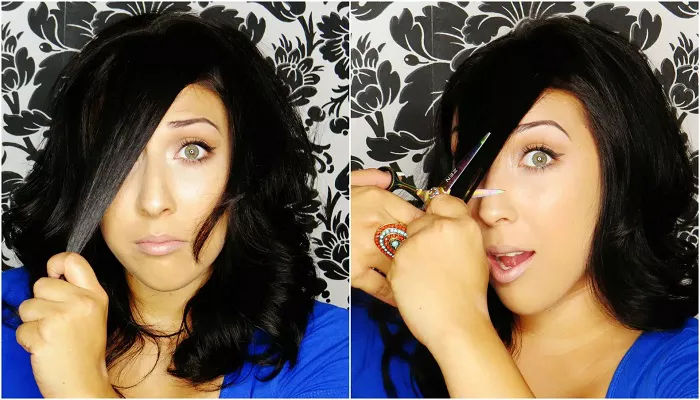Short hairstyles look crisp and stylish when freshly cut. But after a few weeks, short hair often grows out unevenly. It may lose its shape or volume. Layers start to blur. Bangs grow into the eyes. At this stage, many women feel stuck. Waiting for the next cut can feel too long. Yet trimming too often can slow down a new look.
That’s why learning to manage and style overgrown short hair is essential. It gives you control. It keeps your appearance fresh between salon visits. And it allows for creativity with minimal effort. Whether you’re growing out a pixie or bob, these tips help restore balance and texture.
Assessing Your Hair’s Current Shape and Texture
Before trying any styling ideas, take a close look in the mirror. Study how your hair has grown. Has it become heavy around the crown? Are your ends flipping out? Is your fringe invading your eyes? Understanding these changes helps pick the right style trick.
Also consider your hair texture. Fine hair gets limp more quickly. Wavy or thick strands may puff or frizz as they grow. Each hair type responds differently, and styling needs vary. Use lightweight tools and a flexible mindset.
How to Style Overgrown Short Hair?
Step 1: Bring Back Structure with Strategic Styling
If your cut had layers, structure may fade with growth. To restore that shape without cutting, use styling products that offer separation. A light wax, pomade, or sea salt spray can help. Apply to dry hair and twist small sections around your fingers. This lifts and defines your natural layers.
Avoid heavy creams or gels. They weigh down the style. Instead, opt for airy products that create movement. For example, a root-lifting spray on damp hair gives a soft, voluminous base. Then let your hair air dry for a natural flow.
Step 2: Redirect and Define Grown-Out Bangs
Bangs grow quickly. They can look messy when they hit the eye line. Instead of trimming right away, restyle them. Use a round brush and dryer to sweep them to the side. Or part your hair deeper to blend bangs with longer layers.
You can also use a bobby pin to twist and secure your fringe back. This turns it into a style feature. Use a finishing spray to keep the look in place. Add texture at the ends for a lived-in look.
Step 3: Embrace New Partings and Directions
Changing your part line creates instant lift. A side part adds drama. A middle part offers balance. A zig-zag part hides uneven growth. These small changes can revive a tired style.
Flip your part every few days to keep the roots from flattening. This also helps maintain volume. For fine hair, sprinkle a bit of dry shampoo at the roots. Massage gently and flip the hair upside down. Then flip back and style.
Step 4: Use Accessories to Add Shape and Charm
Hair clips, headbands, and scarves can tame grown-out sections. They are also a fashion statement. Use them to pull back stray strands. Or place them strategically to add interest.
Choose accessories that complement your face shape. Wide bands can frame round faces. Smaller pins work well for angular jawlines. Try metallic clips or velvet bands for a modern touch.
Creating Styles for Different Overgrown Cuts
Pixie Cut Grown Out
A grown-out pixie becomes more flexible. You can slick it back for a bold look. Or let the top layers fall loosely forward. Add dry texturizing spray for volume. Push the hair behind one ear to show off cheekbones.
If the back grows faster than the top, consider using a mini straightener to control the shape. This lets you sculpt a sleek profile. Or flip the ends outward for a playful twist.
Bob Cut Grown Out
A bob that has passed the chin offers more room for style. Use a curling wand to add soft waves. Or try a half-up, half-down twist. This pulls back top layers while letting the rest flow.
Tuck one side behind the ear and secure with a clip. This draws attention to the neckline. You can also braid the front sections and pin them back. This gives the illusion of a shorter cut with more detail.
Maintaining Health and Shine Between Cuts
Overgrown hair still needs care. Use hydrating masks once a week. These improve elasticity and reduce frizz. Avoid over-washing. It strips natural oils that help control flyaways.
Get regular trims every 8 to 12 weeks if you’re growing out your hair. Ask your stylist for a light shape-up. This keeps the ends healthy without losing progress.
Also, consider your shampoo. Use products suited for your texture and color. Avoid sulfates if your hair is dry. Switch to volumizing formulas if your style feels flat.
Boosting Confidence During the Transition
It’s normal to feel unsure when hair is in-between styles. But with the right approach, this phase can be empowering. Use it as a chance to experiment. You might discover new favorites.
You can also find fresh Women Hairstyle Ideas that suit your overgrown length. Don’t wait for the perfect cut. You can create it with tools, clips, and care.
Conclusion
Overgrown short hair doesn’t mean giving up on style. It means adapting. With the right tricks, accessories, and mindset, you can enjoy every phase of your hair’s journey.Try new partings. Use light texture sprays. Embrace stylish accessories.
Your short cut may be growing, but your style options are expanding. Enjoy the transformation and shape it your way.


